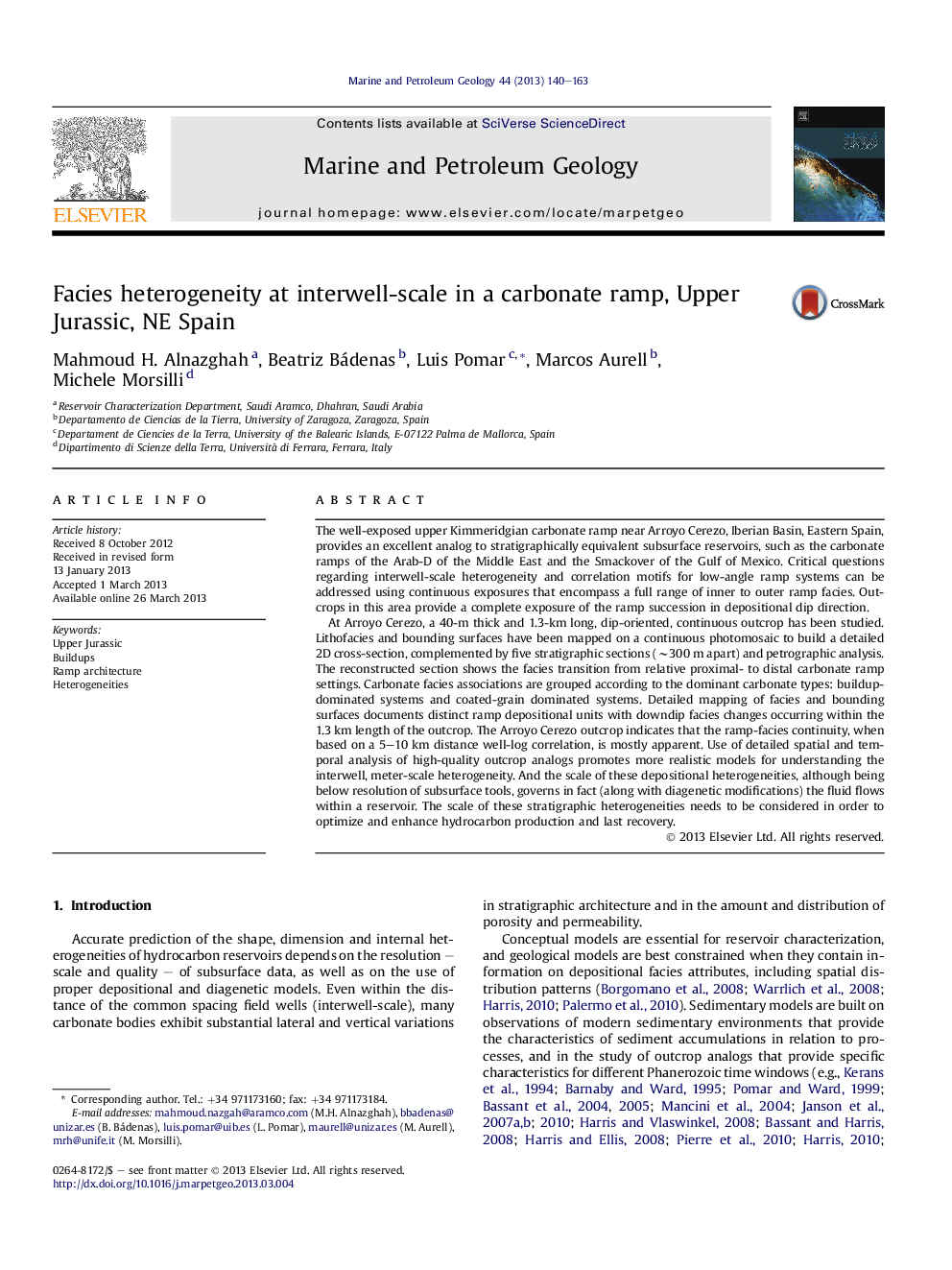| کد مقاله | کد نشریه | سال انتشار | مقاله انگلیسی | نسخه تمام متن |
|---|---|---|---|---|
| 4695693 | 1637180 | 2013 | 24 صفحه PDF | دانلود رایگان |

• Field analog to stratigraphically equivalent subsurface reservoirs.
• Address interwell-scale heterogeneity for low-angle ramp systems.
• Two types of dominant carbonate production: buildup- and coated-grain systems.
• Ramp-facies continuity, at 5–10 km distance well-log correlation, is mostly apparent.
• Downdip facies changes occur within the 1.3 km length of the outcrop.
The well-exposed upper Kimmeridgian carbonate ramp near Arroyo Cerezo, Iberian Basin, Eastern Spain, provides an excellent analog to stratigraphically equivalent subsurface reservoirs, such as the carbonate ramps of the Arab-D of the Middle East and the Smackover of the Gulf of Mexico. Critical questions regarding interwell-scale heterogeneity and correlation motifs for low-angle ramp systems can be addressed using continuous exposures that encompass a full range of inner to outer ramp facies. Outcrops in this area provide a complete exposure of the ramp succession in depositional dip direction.At Arroyo Cerezo, a 40-m thick and 1.3-km long, dip-oriented, continuous outcrop has been studied. Lithofacies and bounding surfaces have been mapped on a continuous photomosaic to build a detailed 2D cross-section, complemented by five stratigraphic sections (∼300 m apart) and petrographic analysis. The reconstructed section shows the facies transition from relative proximal- to distal carbonate ramp settings. Carbonate facies associations are grouped according to the dominant carbonate types: buildup-dominated systems and coated-grain dominated systems. Detailed mapping of facies and bounding surfaces documents distinct ramp depositional units with downdip facies changes occurring within the 1.3 km length of the outcrop. The Arroyo Cerezo outcrop indicates that the ramp-facies continuity, when based on a 5–10 km distance well-log correlation, is mostly apparent. Use of detailed spatial and temporal analysis of high-quality outcrop analogs promotes more realistic models for understanding the interwell, meter-scale heterogeneity. And the scale of these depositional heterogeneities, although being below resolution of subsurface tools, governs in fact (along with diagenetic modifications) the fluid flows within a reservoir. The scale of these stratigraphic heterogeneities needs to be considered in order to optimize and enhance hydrocarbon production and last recovery.
Journal: Marine and Petroleum Geology - Volume 44, June 2013, Pages 140–163